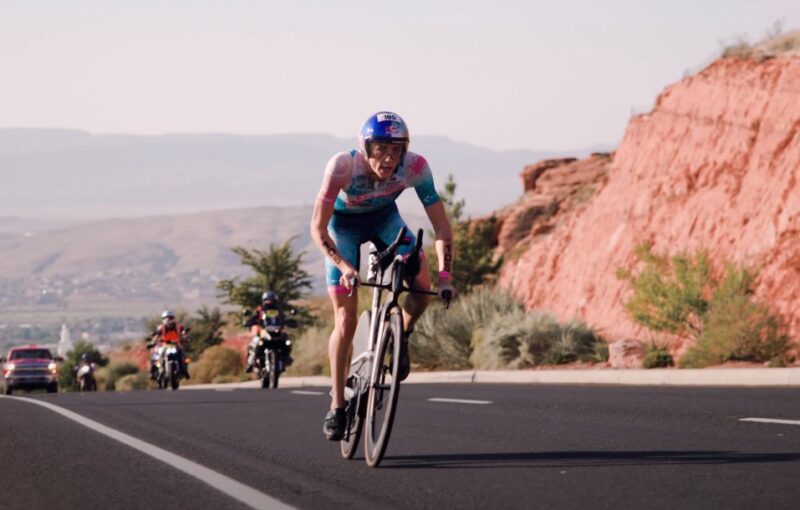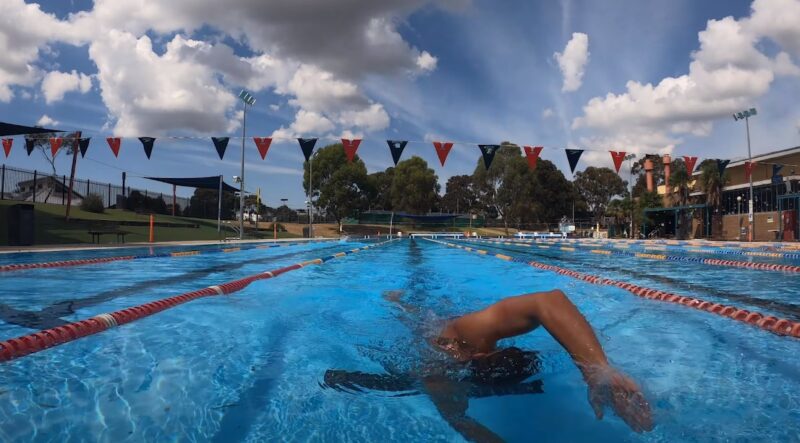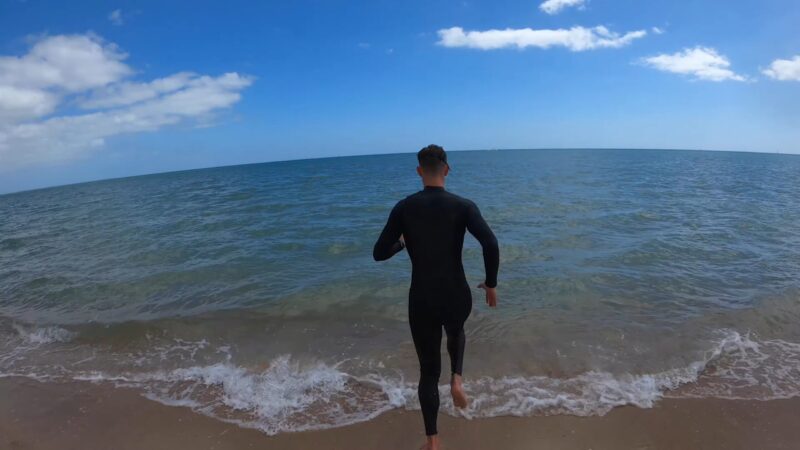Embarking on the journey to complete a sprint triathlon is a thrilling and challenging endeavor. This multisport race, which includes swimming, cycling, and running, tests not just your physical strength but also your mental fortitude and strategic planning.
This guide explores the nuances of preparing for a sprint triathlon, offering a detailed roadmap to help you cross the finish line with confidence.
Getting Started

In a sprint triathlon, you will tackle a 750m swim, a 20km bike ride, and a 5km run. This event demands not just proficiency in each individual sport but also the ability to seamlessly transition between them.
Assess Your Current Fitness Level
Carefully assess your skills in swimming, cycling, and running. Identify which discipline is your strongest and which requires the most work. Consider factors like endurance, speed, technique, and comfort level in each area.
Consult a healthcare professional to ensure you’re physically ready to undertake such a rigorous training regimen. This is particularly important if you have any underlying health concerns or are new to intense physical activity.
Setting Realistic Goals
- Short-term Goals: Establish incremental objectives like improving swim time by 30 seconds, adding 5km to your cycling distance, or running a consistent pace. These goals will offer a sense of achievement and help maintain motivation.
- Long-term Goals: Define your primary objective for the sprint triathlon. This could range from simply completing the race, aiming for a specific time, or competing against others. Align your training to this goal.
Training Essentials
Developing a Training Plan
Craft a plan that gives equal attention to swimming, cycling, and running. Allocate specific days for each discipline and include sessions that combine these sports, such as bike-run workouts.
Schedule rest days strategically to allow your body to recover. Rest is vital for muscle repair, preventing injuries, and improving overall performance.
Equipment Checklist
| Discipline | Essential Gear | Details |
|---|---|---|
| Swimming | High-quality swimsuit | Designed for racing, offers streamlined movement in water. |
| Comfortable and leak-proof goggles | Ensures clear vision and comfort during the swim. | |
| Triathlon-specific wetsuit (for cold water) | Provides warmth and buoyancy in cold water conditions. | |
| Cycling | Road bike | Suitable for beginners, ensures a balance between speed and control. |
| Aerodynamic clothing | Reduces air resistance, enhancing speed and efficiency. | |
| Well-fitting helmet | Essential for safety, should be comfortable and aerodynamic. | |
| Clipless pedals | Improves cycling efficiency by allowing a better foot-to-pedal connection. | |
| Running | Lightweight, supportive running shoes | Provides cushioning and support, reduces risk of injury. |
| Moisture-wicking clothing | Keeps the body cool and dry, enhancing comfort during the run. |
Discipline-Specific Training

Swimming Training
Work with a coach or utilize resources to refine your stroke for maximum efficiency. Focus on aspects like arm movement, breathing technique, and body positioning. Combine longer, endurance-building swims with shorter, high-intensity interval training.
Practice in open water if possible, as it differs significantly from pool swimming.
Cycling Training
Bike Fit: Ensure your bike is properly fitted by a professional. This improves efficiency, and comfort, and reduces the risk of injury.
Interval Training: Incorporate varied cycling workouts, including long-distance endurance rides and shorter, high-intensity interval sessions. Train on different terrains and inclines.
Running Training
Focus on running form, including posture, stride length, and foot placement. Efficient running conserves energy for the later stages of the race. Regularly practice transitioning from cycling to running.
This helps your legs adjust to the change and simulates race conditions.
Transition Training

Regularly practice the art of transitioning, including the quick change of gear and orientation. Speed and efficiency in transitions can significantly affect your overall race time. Learn the best ways to set up your transition area for quick changes.
Practice your strategy for both T1 (swim-to-bike) and T2 (bike-to-run) transitions.
Nutrition and Hydration
Consume a diet rich in carbohydrates for energy, proteins for muscle repair, and healthy fats. Pay attention to micronutrients for overall health. Understand your body’s hydration needs, particularly during training and racing.
Experiment with sports drinks and energy gels that you plan to use on race day.
Mental Preparation

Regularly visualize your race day, from swimming to running, including transitions. This mental rehearsal can enhance confidence and performance.
Stress Management
Develop strategies to manage nerves and stress. Techniques can include meditation, breathing exercises, and positive self-talk.
FAQs
How much time should I allocate to training each week when preparing for a sprint triathlon?
Ideally, you should aim for about 4-7 hours of training per week, depending on your current fitness level and goals. This time should be divided among swimming, cycling, running, and transition practice.
Beginners may start at the lower end, while more experienced athletes might train towards the higher end.
Can strength training be beneficial for sprint triathlon preparation?
Yes, strength training is beneficial. It enhances your overall muscular endurance, helps prevent injury, and improves power and efficiency. Incorporate 1-2 sessions of full-body strength workouts per week, focusing on core strength, leg power, and upper-body endurance.
What is the best way to manage nutrition on race day?
On race day, stick to familiar foods that you know agree with your stomach. Have a balanced breakfast about 2-3 hours before the race, consisting of carbohydrates and some protein. During the race, utilize energy gels or chews if needed, especially during the cycling leg. Stay hydrated with water or an electrolyte drink.
How important is open water swim practice for a sprint triathlon?
Open-water swimming is crucial if your race involves it. It’s different from pool swimming, with factors like water currents, visibility, and lack of lane lines. Try to get in several open water sessions before your race to become comfortable with these conditions.
Should I invest in triathlon-specific shoes for the cycling and running portions?
While not mandatory, triathlon-specific shoes can offer benefits. Cycling shoes designed for triathlons are typically easier to slip on and off and are optimized for quick transitions.
Similarly, triathlon-specific running shoes can be more comfortable for running without socks, which is common in triathlons.
How do I deal with the ‘jelly legs’ feeling during the transition from cycling to running?
‘Jelly legs’ are common due to the shift in muscle usage between cycling and running. To mitigate this, practice brick workouts (back-to-back biking and running sessions) during your training. This helps your body adapt to the change in movement and reduces the jelly legs sensation on race day.
The Bottom Line
Training for a sprint triathlon is a multi-faceted journey that challenges you to push beyond your limits. By following a structured training plan, focusing on discipline-specific training, mastering transitions, and paying attention to nutrition and mental preparation, you’ll be well-prepared for race day.
Embrace each day of training as a step towards your goal, and enjoy the journey of personal growth and achievement that comes with preparing for a sprint triathlon.

